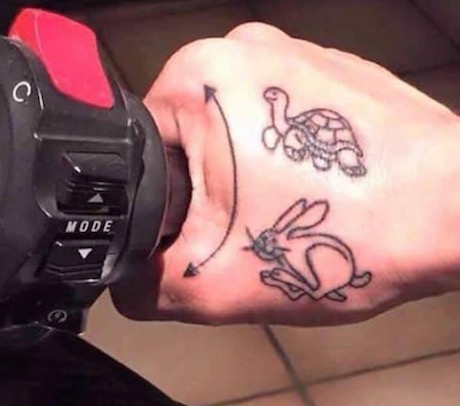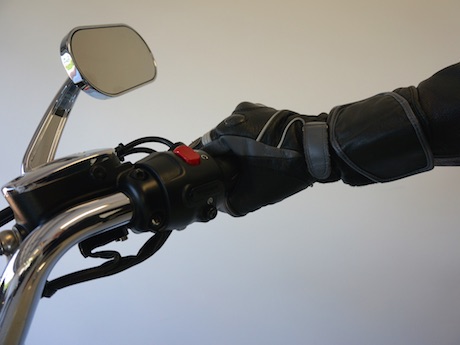Surely how you hold the motorcycle throttle should be simple and straightforward, but it’s not.
Everyone agrees you should have a relaxed grip and never use the throttle to hold on to the bike. “Throttling” the throttle will lead to jerky acceleration over bumps and after some time it will cramp your hand.
However, there is a deep divide between those who say you should wrap your four fingers and thumb around the throttle and those that suggest one or two fingers should be constantly resting on the brake lever for emergency application to prevent a motorcycle accident.
Note that this advice is for riding on formed roads. Click here to find out how to properly hold a dirt bike throttle.
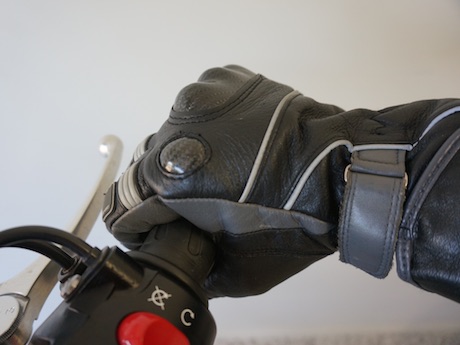
Most riders are taught to grip with all four fingers and to keep their wrist as straight a position as possible. They are also taught to release the throttle and use all fingers when applying the brake.
The reasons are that the rider will then avoid accidental acceleration while braking, have more power and control over the brakes and not lock up the front brake with a panic grab on the lever.
Those are all fair points, especially for beginners.
Hold on!
However, is it the best way to continue to ride?
Some claim that the split-second delay in taking your fingers off the throttle and reaching out for the brake could be crucial in an emergency such as a kangaroo hopping out unexpectedly in front of you.
They argue that one or two fingers resting on the brake cuts down response times, although the four-fingers brigade say it leads to panic braking.
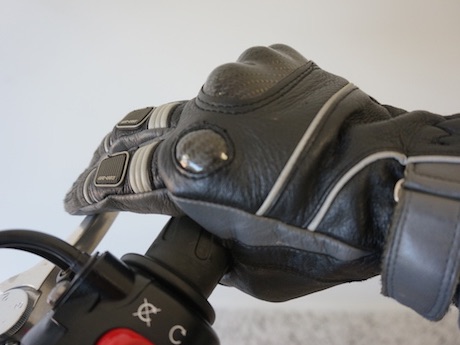
If you believe the two-finger theory, which is used by many racers, then make sure your front brake has a light action that can be activated by just one or two fingers and there is plenty of initial disc bite.
Another reason more experienced riders use one or two fingers on the brake and the others on the throttle is so they can blip the throttle on downshifts.
This matches engine speed to wheel speed and prevents dangerous rear-wheel lock-up. I notice that Kawasaki and KTM are introducing slipper clutches to avoid this problem on their learner bikes.
While that is a good safety device, at some stage riders do need to learn this downshift technique and it requires having one or two fingers resting on the brake lever to activate brakes and throttle together.
There are several other reasons why resting a couple of fingers on the brake may be a good idea.
Relax!
One is to avoid cramp on a long trip. It forces your hand to relax.
Another is on bumpy roads as the fingers on the brake lever tend to steady sudden hand movements which can contribute to jerky acceleration.
New riders should stick to what they are taught, but they should eventually learn how to downshift with throttle and brake.
Then it’s a case of doing whatever feels most comfortable for you, or perhaps varying your style to suit the circumstances.
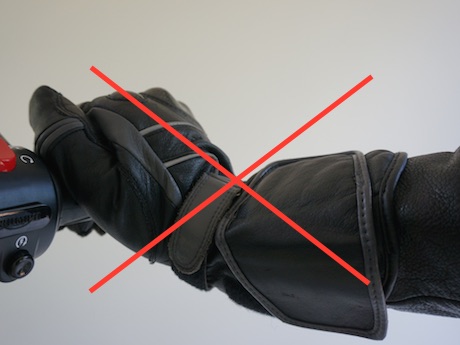
Final points about gripping the throttle: Leave your thumb under the throttle, not resting on top as this gives no control; keep your wrist straight; and don’t grip too close to the inside or outside of the throttle as this can cause it to stick as your hand rubs against the fixed part.
Are you ready for a thrilling riding experience? Do you love online slots, motorbikes, and rock music? Well, you can now grip the throttle and ride down highway for a chance to win exciting prizes thanks to Betsoft’s Slots Angels video slot. Join the bikers as they race across the desert and get the opportunity to win a huge progressive jackpot. Read a detailed review of Slots Angels at https://www.australianpokiessite.com/ and play to win your prize now!


